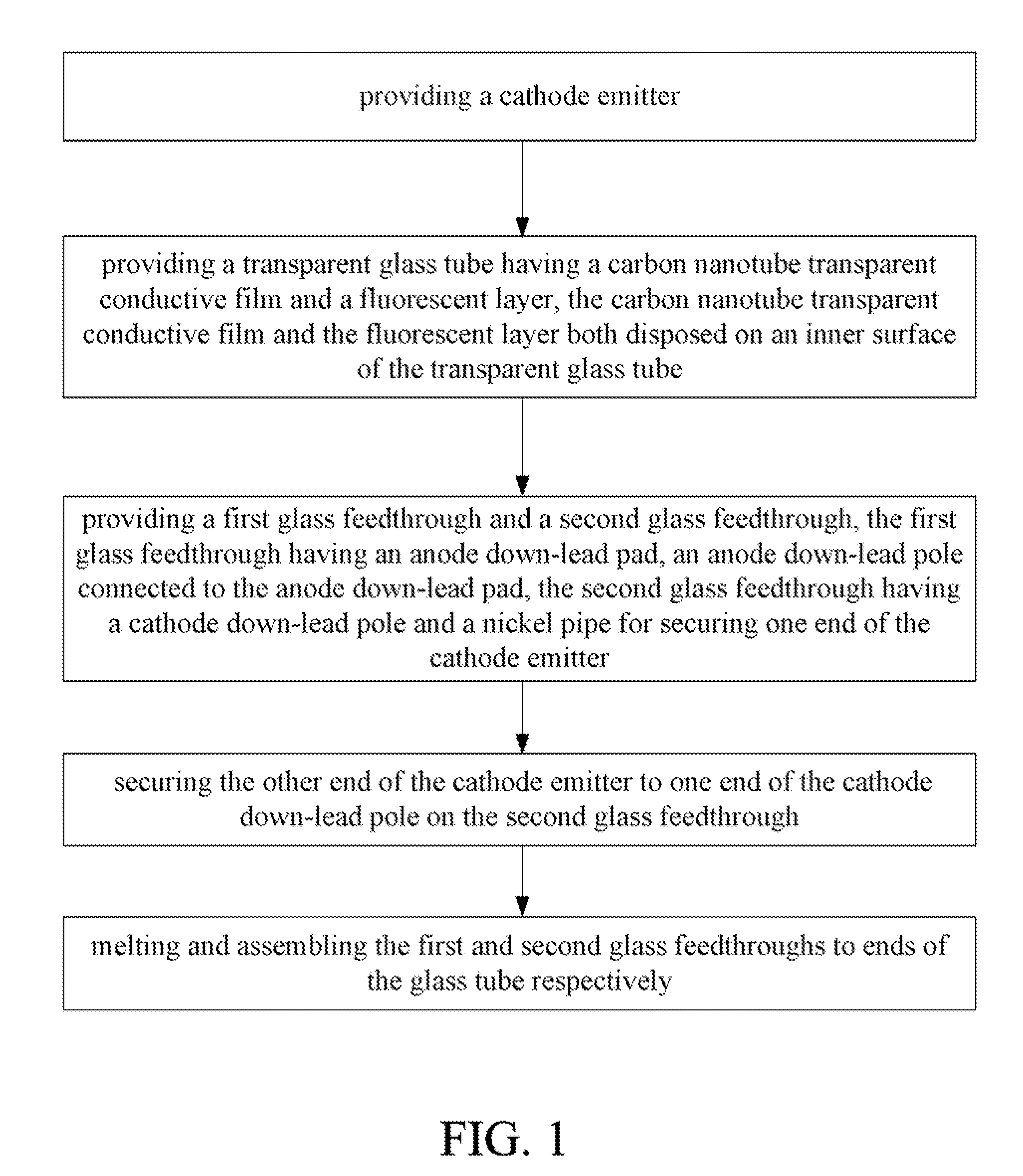Method for making field emission lamp
a field emission lamp and emission technology, applied in the manufacture of electric discharge tubes/lamps, non-electron-emitting electrode materials, discharge tubes luminescnet screens, etc., can solve the problems of incandescent lamps, low energy efficiency, and most of the electric energy used to power lamps
- Summary
- Abstract
- Description
- Claims
- Application Information
AI Technical Summary
Benefits of technology
Problems solved by technology
Method used
Image
Examples
Embodiment Construction
[0018]Reference will now be made to the drawings to describe, in detail, embodiments of the present method for making a field emission lamp.
[0019]Referring to FIG. 1, a method for making a field emission lamp, in accordance with a first embodiment, generally includes the steps of: (a) providing a cathode emitter; (b) providing a transparent glass tube having a carbon nanotube transparent conductive film and a fluorescent layer, the carbon nanotube transparent conductive film and the fluorescent layer both disposed on an inner surface of the transparent glass tube; (c) providing a first glass feedthrough and a second glass feedthrough, the first glass feedthrough having an anode down-lead pad, an anode down-lead pole connected to the anode down-lead pad, the second glass feedthrough having a cathode down-lead pole and a nickel pipe for securing one end of the cathode emitter; (d) securing the other end of the cathode emitter to one end of the cathode down-lead pole on the second glas...
PUM
 Login to View More
Login to View More Abstract
Description
Claims
Application Information
 Login to View More
Login to View More - R&D
- Intellectual Property
- Life Sciences
- Materials
- Tech Scout
- Unparalleled Data Quality
- Higher Quality Content
- 60% Fewer Hallucinations
Browse by: Latest US Patents, China's latest patents, Technical Efficacy Thesaurus, Application Domain, Technology Topic, Popular Technical Reports.
© 2025 PatSnap. All rights reserved.Legal|Privacy policy|Modern Slavery Act Transparency Statement|Sitemap|About US| Contact US: help@patsnap.com



